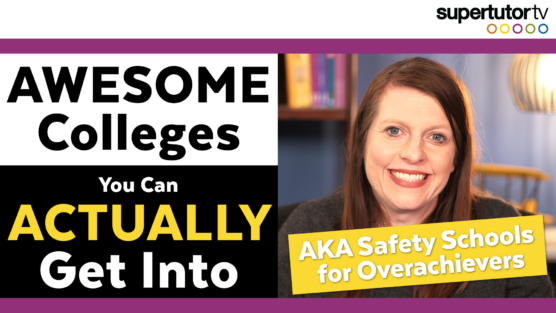Have you ever wondered if there is a difference between a college and a university, what community colleges exactly are, what liberal arts colleges are, what an engineering school is, or what for-profit universities are? In this blog, we’re going to talk about all of the higher education options that exist in the United States and share some fun statistics about how the higher education system in the U.S. works.
We’re going to start off talking about community colleges, which are sometimes called junior colleges. They are institutions that offer two-year programs or degrees called associate’s degrees, and they also offer a pathway to transfer to four-year universities so that you can get a bachelor’s degree. Bachelor’s degrees tend to be Bachelor of Arts (BA) or Bachelor of Sciences (BS) degrees. These are kind of the standard university degree in the United States.
There are 1,167 community colleges in the U.S., give or take, and they enroll about 12.4 million students, which make up approximately half of all the undergraduate students in the entire country. Community colleges tend to offer not only liberal arts offerings (majors like English, Psychology, or U.S. History) but also career-oriented tracks, especially if you’re going for an associate’s degree. Some of those tracks can actually put you in line to jump through hoops to secure higher salary ranges in fields such as Paralegal Studies, Radiology, and Physical Therapy. They also often offer Business, Nursing, Occupational Health and Safety degrees. So, there are many career paths that you can get on if you’re not super academic and don’t want to go to college for four years. In those cases, community colleges or an associate’s program might be a good fit for you.
Though about 28% of community colleges do offer some kind of on-campus housing, only 1% of community college students live in on-campus housing. So, 99% of people going to community colleges are commuters, which is a little bit different from four-year universities. Generally, the only thing you need to go to a community college is a GED or a high school diploma. If you have one of those, you are qualified to attend. That being said, individual programs within a community college (for example, a nursing program) might have higher prerequisites or even an application process. That could mean taking a standardized test or getting a particular grade in prerequisite courses before you can enroll in a particular major track. So, those are also some things to keep in mind for community colleges.
Moving onto four-year universities, there are several different kinds. There’s no official definition of a liberal arts college, so we’re going to go with what U.S. News & World Report tends to say, which is completely artificial. They define liberal arts colleges as colleges and universities that first, focus on the undergraduate experience and generally do not offer doctoral programs, and second, confer over 50% of their degrees in the liberal arts. These are typically the social sciences, humanities, and general sciences, but not necessarily engineering or career-oriented pathways such as business or nursing. Liberal arts colleges, in general, tend to be smaller than major universities and include places like Amherst, Williams, Swarthmore, the Claremont colleges, and U.S. military academies.
There are also colleges that don’t fall into these big buckets. Babson, for example, is a really great business school for undergraduates, but it doesn’t fall neatly into any U.S. News & World Report list or bucket, and that’s okay. So, don’t get too hung up on all of these labels, but we hope to at least explain what they are and what they mean.
Next on the list are national colleges and universities. U.S. News & World Report has a ranking of these institutions, and what distinguishes them from all of the other kinds of lists is that these colleges and universities offer graduate programs, both at the doctoral level (PhDs for most disciplines) as well as master’s programs. At these schools, there is a full range of programs, and they grant more than half of their degrees in liberal arts disciplines. They tend to have on-campus housing, so about 60% of students at private universities and 36% of students at public universities live on campus. They tend to be the colleges and universities that a lot of you have heard of, but they range in size too.
U.S. News & World Report also details a couple of categories that we’ll briefly touch on. They call these institutions regional colleges and universities. Regional colleges award fewer than half of their degrees in the liberal arts and sciences, generally, and they don’t have doctoral programs. Regional universities offer a full range of undergraduate programs and some master’s programs, but few doctoral programs. And this is where we get into the idea of university versus college.
Sometimes, the word “university” is used to note only the schools that have higher levels of education, like master’s and doctorate degrees. “College,” on the other hand, often means that that particular institution is focused on the undergraduate experience. A two-year university could also be called a college. So, the word “college” tends to be used with schools with an emphasis on two-year and four-year programs, and “university” tends to be used with schools that have broader offerings. There is a little bit of a distinction, but we kind of use the two interchangeably in American English.
So, what kind of programs would you want to go to at a regional college? If you are really on a career-oriented track—such as business or nursing—a lot of schools that have big programs focused on those tracks tend to end up on the other side of the 50% mark for liberal arts degrees granted. But that doesn’t mean that it’s not a valuable degree or that the university in your region isn’t recognized. So, we recommend that you take each college one at a time, look at what its reputation is, see what offerings it has, and decide what the right fit for you is.
Don’t worry about what list on U.S. News & World Report the college you are looking at is on. Instead, focus on the institution’s overall reputation and the offerings it has, and don’t get too wrapped up in the categories, except for one: for-profit universities.
For-profit universities generally have the shadiest reputation of all colleges and universities in the United States. The most famous for-profit universities would be DeVry University and the University of Phoenix. These universities spend a lot of money on advertising and on counselors that are making calls and putting potentially heavy recruiting practices in place. For-profit universities typically don’t look great on applications for a higher-level degree or on a resume. We recommend that students with some experience at a for-profit university and at a non-profit university don’t put the for-profit classes on there because it can look bad. Are they good for anything? If there’s a specific class or skill you need to learn, sure, go and take it. But we generally don’t recommend for-profit universities if you want to get the most out of your education. They also tend to be really expensive. Only 30% of students who enroll in programs at for-profit universities graduate within six years, so you can see that’s around half of where we are at traditional universities. And though it’s technically higher than community college students, a lot of community college students never intended to get a four-year degree.
Some of these institutions have been accused of predatory practices, which means that they might recruit students by telling them they can get federal loans to pay for their particular career or by citing career statistics that are impractical given that they’re getting a for-profit degree. Your degrees from these institutions can actually hinder employment and be a red flag for people going through piles of resumes. So, they’re problematic in a lot of ways, and though that doesn’t mean there isn’t any use case for these kinds of universities, if you’re a student looking at trying to get an education, this is not the one we would start with.
Start with everything else and see if you can get into a program that suits you. And yes, you might have to jump through hoops, take a test, or have a qualifying GPA, and it might be harder, but there’s a reason there are barriers to entry in education, and that’s because education is most valuable when you finish and go through the whole process.
We hope you guys found this informative and learned something you didn’t know before!




